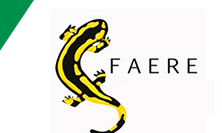Forest sector models (FSM) encompass a set of partial equilibrium modelling frameworks originally conceived to perform projections of timber supply and forest inventories. Now commonly used for forest policy analysis, FSM have gradually integrated objectives other than timber production such as habitat conservation, carbon sequestration and bioenergy production. This paper gives an overview of non-timber objective (NTO) modelling in FSM through a systematic literature review followed by an in-depth narrative review. In particular, we identify NTO that have been integrated into FSM, elicit technical innovations that have enabled it, and discuss current limitations to their integration. Results show that the study of NTO is a growing topic in FSM research, with bioenergy production and climate change mitigation as the most commonly studied NTO. However, there are discrepancies regarding the respective contributions of different families of models, and not all NTO have been integrated to the same degree. On the one hand, bioenergy production has been deeply integrated through marginal modifications of the market component of models. On the other hand, the modelling of carbon sequestration and habitat protection entails deeper changes, such as the addition of new resources to models, an increase in the complexity of the objective function and associated constraints, or the use of tools and models other than FSM. Critical steps for a better economic-environmental assessment of forest policies are to integrate more varied NTO into FSM and to allow NTO to enter the optimisation problem on the same level as timber production.
Programme > Papiers par présentateur > Riviere MiguelIntegrating non-timber objectives into forest sector models: recent advancements, technical innovations and current shortcomings
1 : Bureau d'Economie Theorique et Appliquee
(BETA)
-
Site web Université de Lorraine, INRA, AgroParisTech
14 Rue Girardet, 54000 Nancy -
France
|




